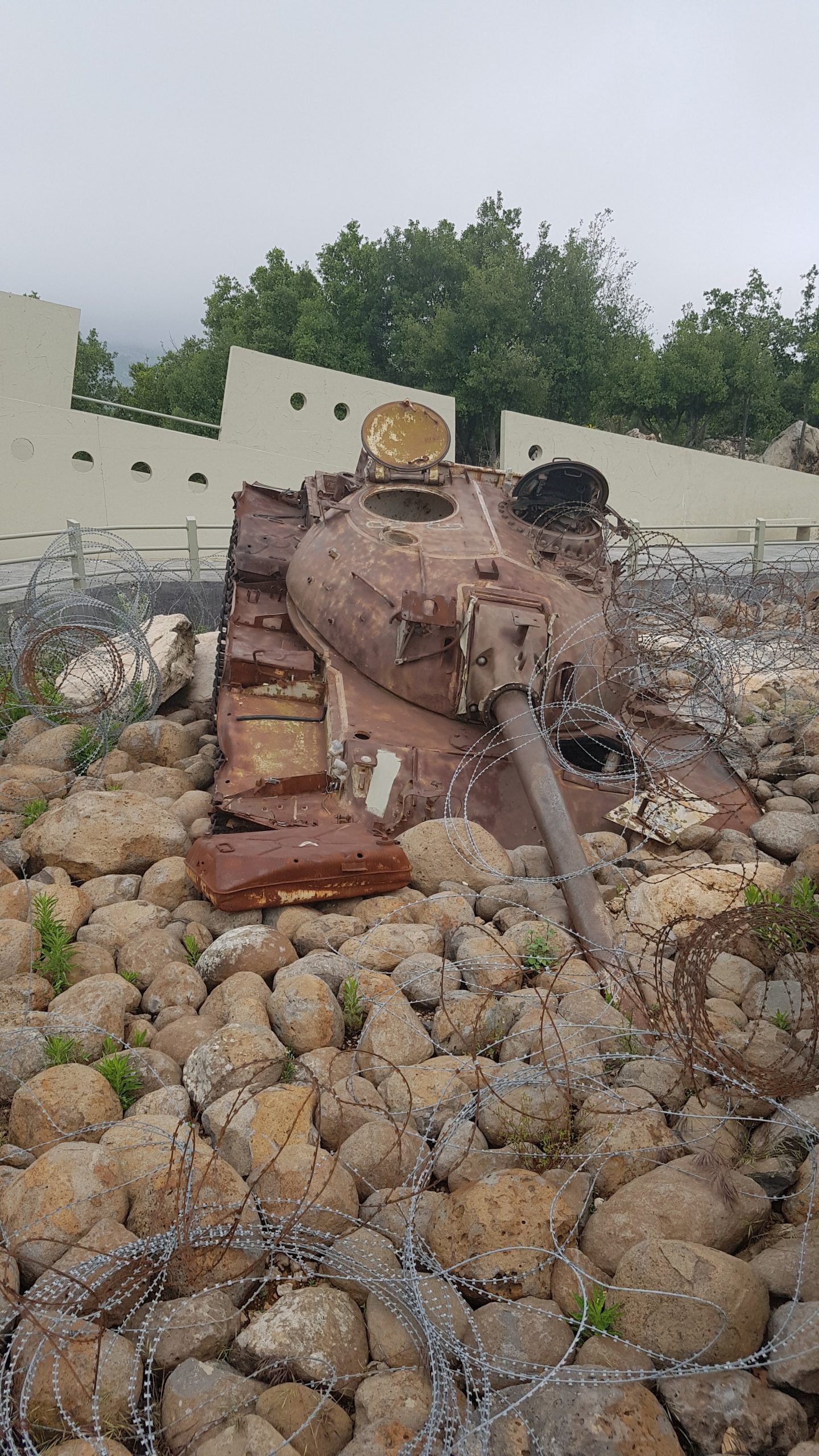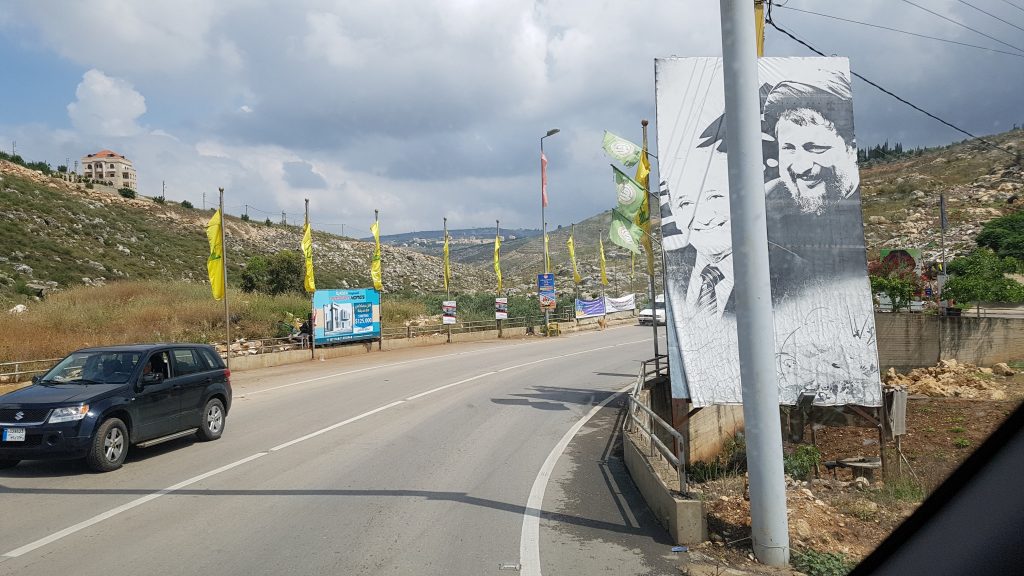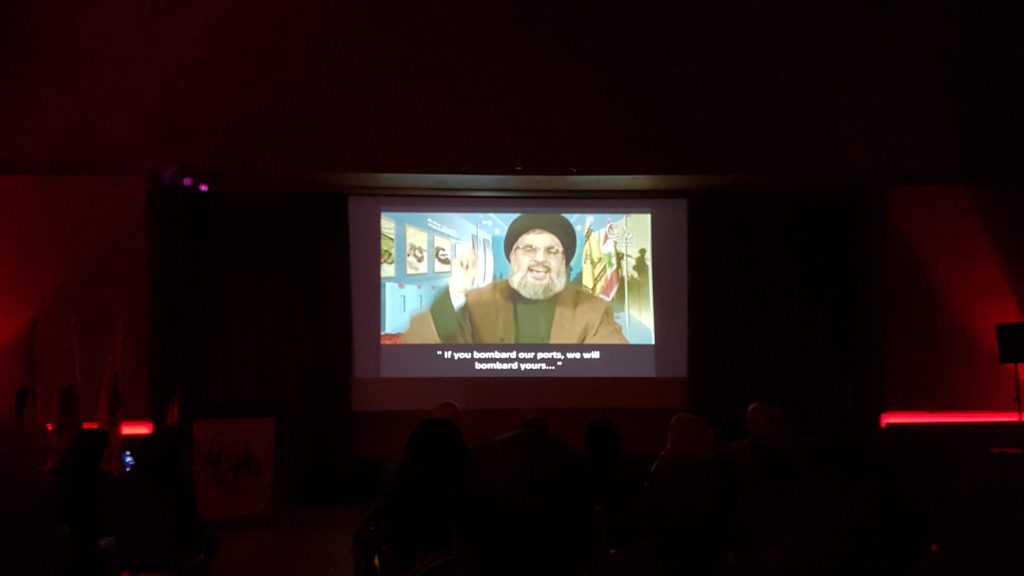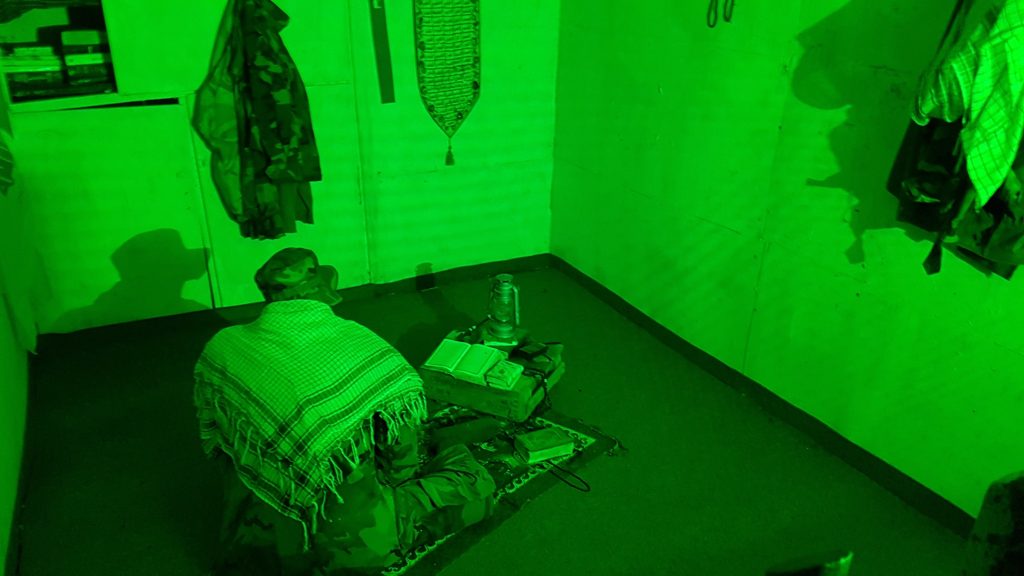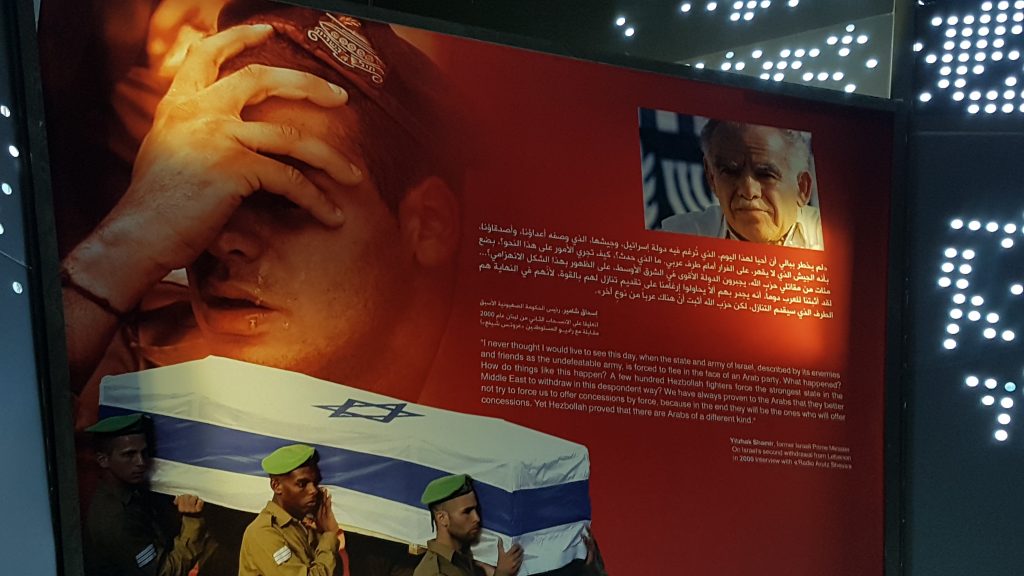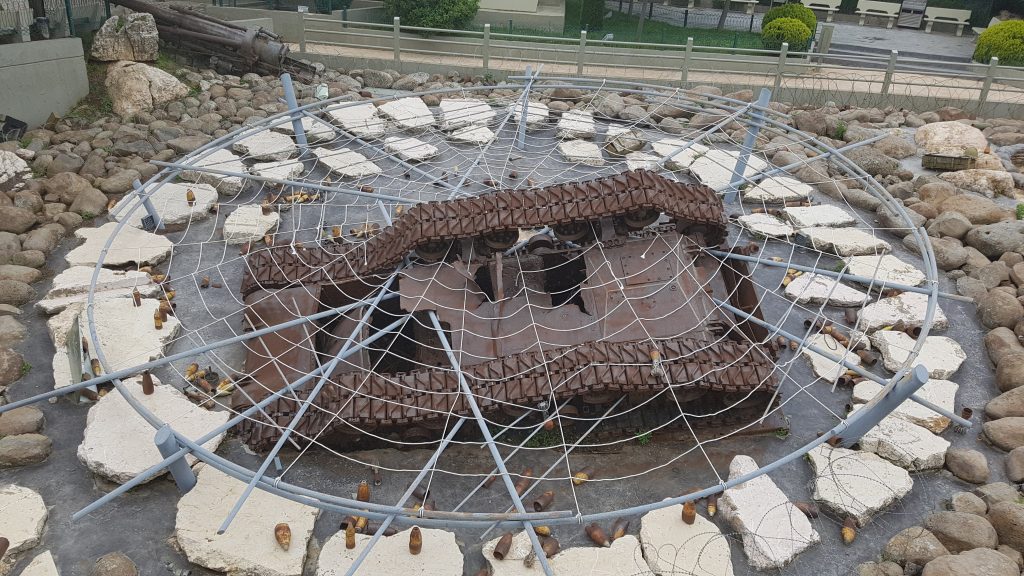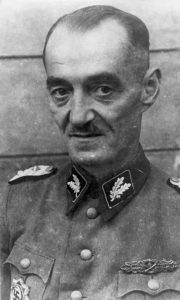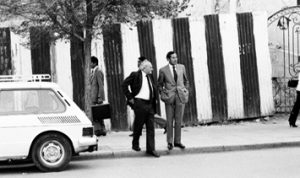The laughter of schoolchildren combined with the sinister hum of an Israeli drone hovering ominously above the clouds is truly something.
Arriving in Beirut, I wanted to get to grips with the cult of personality Hezbollah have in the country and decided to base myself in the heart of the action away from central Beirut. ”Sir, are you sure you want to go here? For you, perhaps a hotel downtown instead?” asked my concerned taxi driver as I asked him to head to the suburbs of Al-Dahiye, a tough Hezbollah neighbourhood defined by poverty and anarchy. On arrival, my taxi driver turned off the meter and insisted I wait in his car until my fixer, Akram, arrived to collect me and lead me to my apartment.
This was an area of Beirut all government advisory websites warn you to stay away from. From my window, I was overlooking run-down streets lined with Hezbollah flags and walking them as a foreigner got you some serious scowls and curious stares. This was an area that had been targeted in Israeli drone strikes multiple times. As I looked at the cloudy sky above, I wondered what the odds were of a heavily armed Israeli Predator Drone looking back at me.
The following day, I was content in the passenger seat of Akram’s Toyota Land Cruiser and gazing out over the azure blue Mediterranean and its golden sands. A man slowly riding his horse along the water’s edge took my mind back to some of the peaceful vacations I had enjoyed on this beautiful sea, in places like Greece and Italy. Suddenly slowing towards a checkpoint, the sun was blocked out by camouflage netting hanging above, the driver and passenger seat of our car lowered, and as the blistering heat entered the car, so did the heads of two heavily armed Lebanese soldiers. A reality check that Lebanon is far from being blessed with the peace of many of its Mediterranean neighbours.
With everything in order, we were ushered forward. ”Welcome to Lebanon” laughed my local fixer and unofficial guide, Akram. We were leaving Central Beirut and heading to the heartland of the volatile borderlands of Southern Lebanon: the heartland of Hezbollah, ground zero of six wars between Hezbollah and Israel and currently the site of a cold war zone between the two enemy states. My previous travel through Israel and the West Bank had brought me face to face with Israeli veterans of the 2006 Lebanon war, and I now wanted to hear the Lebanese perspective. Akram promised to provide this, but in true Middle Eastern style, he was laid back and fairly vague about the plan for the day. Mentioning something about a museum and some interesting people. His true passion was Arabic coffee, a passion we both shared, so I took no objection to numerous stops he made to introduce me to his favourite coffee vendors on the road into the South.
As we travelled further, I began to notice the Western-style billboards advertising consumer goods were left behind us in Beirut, the billboards now advertised political figures or martyrs and the roadside began to turn bright yellow with the countless Kalashnikov emblazoned banners of Hezbollah: The militant Islamic nationalist terrorist group whose name translates to ‘the party of Allah.’ Founded in 1982 and strongly backed by the Iranian regime, Hezbollah is classed as the world’s most well organized, formidable and militarily capable terrorist group. Their reach is long with terror and funding operations spreading through four continents. Their defining anti-Western and radical Shia ideology have earned Hezbollah a formidable list of enemies, including the USA, the European Union, Saudi Arabia, Al-Qaeda and ISIS.
Climbing into the mountains, the loyalty to Hezbollah became more visible with whole towns and villages displaying their allegiance. Apartment blocks were adorned with banners bearing the face of the current charismatic and militaristic Hezbollah leader Hassan Nasrallah, as well as his slain predecessor Abbas al-Musawi, who spent twenty years as one of the world’s most wanted men until his motorcade was annihilated by a car bomb in Damascus in 1992, killing him, his wife and child as well as four others. Israel was blamed for the killing. In these mountains, the cosmopolitan vibe of Beirut was long gone. The South had a sinister atmosphere about it, and my foreign face certainly didn’t go unnoticed by the suspicious locals.
We soon pulled into a car park with a small garden in the corner. Instead of a traditional fountain as a centrepiece, this one had a mass of shrapnel and spent rockets formed into a monument. Akram announced that we had arrived at the ”museum of the resistance. We were clearly to be expected as Akram passed me over to a short, nondescript man in his early 40’s with an icy scowl, we shared a strong handshake before he introduced himself as Hussein. A reserve officer of Hezbollah, he informed me he would be escorting my every step around the museum and welcomed me to ”the land of resistance, purity and Jihad.”
Our first stop was an on-site cinema. I was ordered to sit amongst a large group of visiting schoolkids and watch a 13 minute dramatic, eardrum destroying propaganda video of Hezbollah’s relentless war against Israel. The film culminated in a montage of rocket strikes, an excerpt of an Abbas al-Musawi speech with the closing text in English and Arabic: ”The martyrdom of Sayyid Abbas Moussawi on February 16, 1992 transformed the resistance into a metallic fireball to be embraced by the people and burn the enemy’s mightiness”, in response, almost every school kid in the theatre began to jump up and down and scream with joy.
Reporting back to my watchful escort, we headed on ”the path” which was the former fighting positions of Hezbollah fighters consisting of trails nestled in thick forest and a mass of devastating military equipment 90% of which was clearly from Russian, Syrian or Iranian stockpiles. ”All deactivated, Hussein?” I asked as I placed my hand on a Soviet-era DShK positioned behind some sandbags. ”The museum equipment is maintained and ready to spring back into action should we be face with the Zionist enemy again”. Said Hussein as he tapped a hollow, fibreglass boulder next to him with a grin. ”Understand, that resistance lies behind every rock”. Such boulders were filled with high explosives and used as IEDs against Israeli military targets with devastating effect.
The screaming creak of an opening bunker door greeted my way into the 200 metres deep Hezbollah tunnel network. ”Over 1000 freedom fighters bravely dug these tunnels under fire over a period of 3 years”. Inside, the bark of grainy military radio chatter echoed through the narrow tunnels. Mannequins of praying resistance fighters next to Kalashnikovs, maps and radios filled the rooms. Once garrisoning over 7,000 militants, these damp, claustrophobic tunnels were the backbone of the violent campaign against the Israeli forces. Being used as escape routes and to effectively coordinate the chaotic warfare above ground.
Standing on a viewpoint 1,600 metres high, Hussein grabbed my arm with one hand and pointed into the distance with the other. ”from here, you can see Iqlim al Tuffah, Zahrani, Nabatieh, Saida, Sour and the other areas that were liberated by the heroic resistance in 1985.” The view from here was incredible, and the scene went quiet as I took it all in when suddenly, my Hezbollah guide gripped my arm. ”Listen!” he shouted. Above us, somewhere in the clouds, was the ominous hum of what I assume was an Israeli drone. In the far distance, we could hear the shouting and laughing schoolchildren as they left the park to board their bus. The laughter of schoolchildren combined with the ominous stalking hum of a killer drone of a hostile nation above you is truly something.
‘The Abyss’, the aptly named centrepiece of the museum consisting of ruined Israeli tanks, artillery, helicopters, which symbolizes the defeat of the Israeli army. Hussein was particularly focused on showing me two areas in particular. Firstly, a Merkava Mark 4 tank at the centre of the Abyss. ”The Merkava is the pride of the Israeli horde after our fighters were let loose on it nows sleeps sunk in the dirt” Hussein remarked with his lower jaw jutting out triumphantly. The tank’s barrel had been symbolically tied in a knot.
As our visit toured more masses of captured Israeli equipment and the tools of the resistance fighters, we slowly wound down to the end of the complex. Just like a winery or an amusement park, I was ushered through the gift shop on my way out. But rather than gifts for all the family, on sale, were DVDs of Israeli columns being obliterated, jewellery featuring the face of Nasrallah and Hezbollah branded clothing and merchandise. All of which would lead to serious questions being asked when entering a western country, most of whom consider Hezbollah to be a wholly terrorist organization.
Returning to my apartment in Southern Beirut, I indulged in some incredible Lebanese food on my balcony and got an early night. A few hours later, I was woken up by bursts of gunfire down the street, which lasted only a few minutes. Likely a gunbattle between criminals/insurgents and Hezbollah or local security forces, another day in Lebanon…
